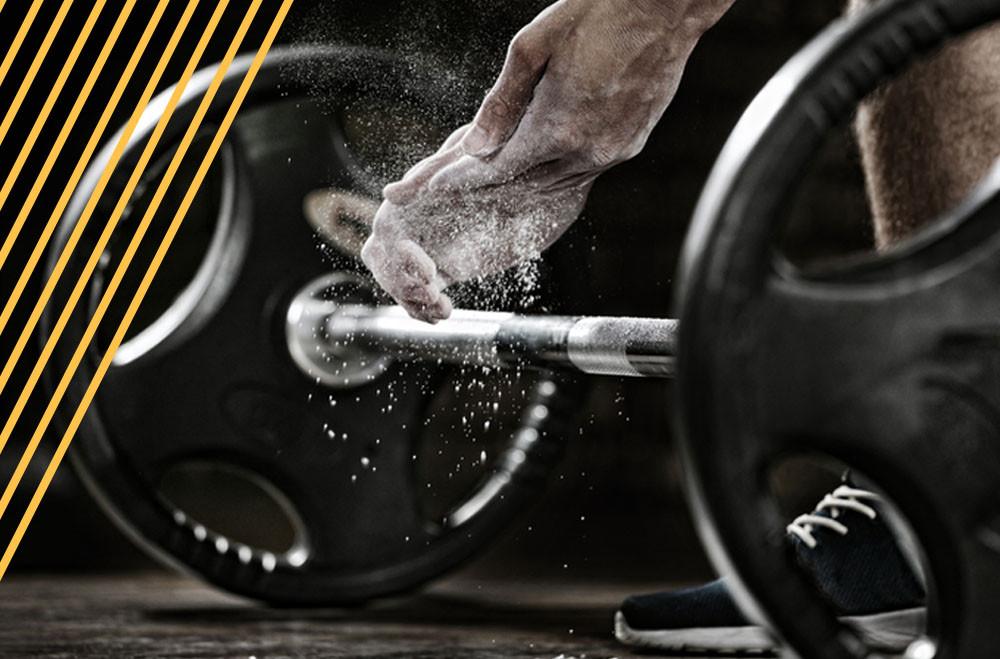What Is The Hook Grip?
For the pulling portion of a clean or snatch, Olympic weightlifters and CrossFit athletes should use the hook grip.
While it can be uncomfortable to learn, it is a much stronger grip than holding the bar with a traditional grip.
To hook grip the barbell: wrap your thumb around the barbell, then lock your thumb in place with your index and middle finger.
We know CrossFit is keen using cleans and snatches in competition.
Any Olympic weightlifter or CrossFit athlete putting up considerable clean and snatch numbers doesn’t even consider gripping the bar any other way.
You are far more likely to miss heavy lifts if you aren’t hook gripping.
Suffice to say, being able to hook grip is imperative to your development as an athlete.
Does The Hook Grip Hurt?
At first, yes. There’s no sense in lying about it.
The first few times you practice the hook grip it might feel like your thumb is being ripped out.
Fortunately, that won’t actually happen. But it’s still not a pleasant feeling.
The hook grip will be uncomfortable until the tendons in your thumb stretch out and the skin develops more calluses.
Depending on how much you practice, it could take between 2-6 weeks before the hook grip feels comfortable.
If you’re serious about CrossFit or Olympic weightlifting, the temporary discomfort will be worth it.
Should I Tape My Thumbs When I Hook Grip?

Applying a layer or two of tape will alleviate some of the pain you experience on your skin.
It should be placed below the knuckle on the lower half of your thumb. 1-2 layers is enough. Any more and you will restrict mobility and have to retape.
The downside of taping your thumbs is that you won’t build up the calluses that will prevent you from needing tape in the first place.
It’s better to suck it up for a few weeks and just use chalk.
If you do use tape at first, use it on your heavy lifts. Don’t make a habit out of using it every time you hook grip.
Practice higher rep cleans and snatches at lighter weights without tape so your thumbs and skin get used to the pressure of the hook grip position.
3 Benefits of Using The Hook Grip
Why do CrossFitters Olympic weightlifters need to use the hook grip? What are the benefits? Here are 3:
#1. It outsmart your nervous system.
When you grip a bar traditionally, your brain send signals to your forearms if it’s concerned about you making a heavy lift.
As a result, your brain essentially sabotages the lift by decreasing the amount of firing that takes place to help you hold onto the bar.
This is a safety mechanism wired deep into our nervous system.
The hook grip acts as an “override” of sorts, allowing you to move heavier weights without cause for concern.
Your thumb serves as the locking mechanism that disables the body’s’ attempt to sabotage a potentially dangerous lift.
#2. It saves your forearms in longer CrossFit WODs.
You’ll still grip the bar tightly with the hook grip, but any CrossFit workout with high rep cleans or snatches is bound to do a number on your grip.
For a workout like Grace or Isabel, you will save a lot of energy and decrease the chances of wearing your grip out in the middle of the workout.
#3. It is the strongest grip available to you!
At the end of the day, this is why we use the hook grip in CrossFit and weightlifting. There is no grip that is stronger and more secure for lifting heavy weights.
Is The Hook Grip Better Than Traditional Grip?

The answer to this question depends on the lift.
For Olympic lifts like the clean and snatch, the hook grip is exponentially better than a traditional grip.
Remember the hook grip is used for the pulling portion of these lifts. The thumb should be released once you’ve caught the bar.
For power lifts like a deadlift, the hook grip can turn a conventional deadlift into a useful accessory exercise for your Olympic weightlifting numbers.
But if your goal is to move a lot of weight, your best bet is to stick with a traditional deadlift grip.
When To Use The Hook Grip?
In the pulling portion of the clean or snatch. From the floor to either the front rack or overhead position, your thumb should be locked into place.
However, it is crucial that you learn to release the hook grip once you’ve caught the bar in the front rack or overhead.
Simply unlock your thumbs and grip the bar traditionally as you finish the repetition. Not releasing the hook grip in these positions will put extra stress on your wrists and shoulders.
It will take timing and practice for this to feel comfortable, so try it with lighter weights first.
Conclusion
Simply put, the hook grip is the strongest grip available to you as a CrossFitter or Olympic weightlifter.
It allows an athlete to “override” their nervous system and move a heavy barbell without fear of missing the lift.
When you first learn to hook grip, it will be uncomfortable. Embrace this, if only because it’s temporary.
If you practice the hook grip, your calluses and thumbs should be conditioned and feel comfortable within 2-6 weeks.
Taping your thumbs iis okay at first, but practice at lighter weights with chalk so you can go without it, too.
The hook grip is used for the pulling portion of cleans and snatches.
Athletes should release their thumb when the bar is caught in the front rack or overhead to mitigate the stress placed on their wrists.
Are you chasing a clean PR?
Do you have ambitions of becoming a competitive CrossFit athlete? Then you must learn the hook grip. The initial discomfort will be worth it!

